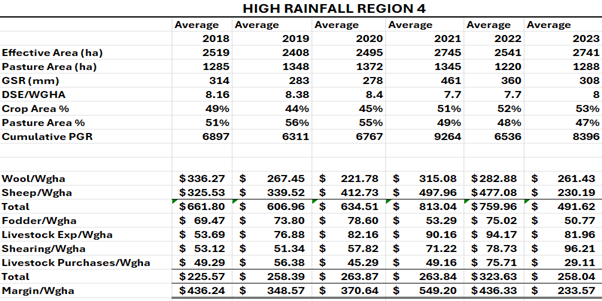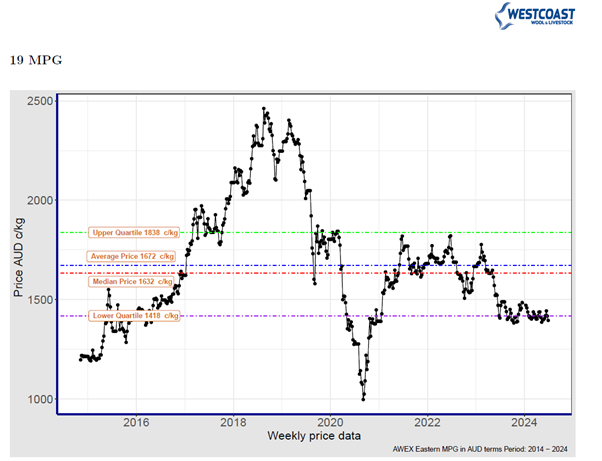Achieving triple, the profit of the average livestock producer sounds like something worth pursuing. Can mindset and system play a role in achieving this outcome?
Mindset???
Worried that two boys had developed extreme personalities, one was a total pessimist, the other a total optimist, their parents took them to a psychiatrist.
First, the psychiatrist treated the pessimist. Trying to brighten his outlook, the psychiatrist took him to a room piled to the ceiling with brand-new toys. But instead of yelping with delight, the little boy burst into tears. “What’s the matter?” the psychiatrist asked, baffled. “Don’t you want to play with any of the toys?” “Yes,” the little boy bawled, “but if I do, I’d only break them.”
Next, the psychiatrist treated the optimist. Trying to dampen his outlook, the psychiatrist took him to a room piled to the ceiling with horse manure. But instead of wrinkling his nose in disgust, the optimist emitted just the yelp of delight the psychiatrist had been hoping to hear from his brother, the pessimist. Then he clambered to the top of the pile, dropped to his knees, and began gleefully digging out scoop after scoop with his bare hands. “What do you think you’re doing?” the psychiatrist asked, just as baffled by the optimist as he had been by the pessimist. “With all this manure,” the little boy replied, beaming, “there must be a pony in here somewhere!”
Looking Back to Look Forward
It is fair to say that in the last couple of years livestock farmers have been in the manure but rarely with gleeful optimism of what is around the corner. However, as green shoots started to germinate across WA’s agricultural region so has the emergence of new possibilities in livestock. Record setting prices for finished and store lamb along with mutton values that well and truly exceed the best lamb prices achieved in early 2024, have provided much to be excited about. With large reductions in merino sired joining’s in 2023 and 2024 and those that did proportionately saw significant shifts to terminal genetics, it is anticipated that the true impact on the state’s livestock reconciliation is a dramatic reduction in the female breeder base into 2026. With restocking in Vic, SA and parts of NSW expected when seasonal conditions improve where will the ewes comes from? At a macro level we expect to see more demand and reduced supply which augers well for farmer returns. Wool production is at levels not seen since some of the Planfarm Directors were children, back in 1921, and as a significant player in the global trade (24%) Australia’s reduction in supply provides an interesting market dynamic.
What actions can growers take?
Now while the market outlook for livestock has improved as rapidly as it declined, the majority of the factors driving this market change are not within grower’s control. So, what is in the grower’s control and how can we leverage both price and production to put the business in the best position over the long term rather than having our emotions ride the ups and downs of the market? What we do know is the growers that focus on controlling the areas they can influence will have better outcomes. As outlined in the intro the best growers produce triple the profit of the average. Yes, triple the average! I am sure everyone is leaning in to hear the secret sauce right. No in general what we see is that the vast majority of livestock growers allow the market to dictate the success of the business rather than take the steps required to drive the performance. As illustrated below (figure 1) the movement in stocking rate over time is negligible (7.7DSE-8.4DSE or 9%), despite 3000kg/ha of variation in cumulative pasture growth rate (remember grown pasture and utilised pasture are two very different things). What this outlines is that on average regardless of season a set level of production is maintained. In good years the sheep are fatter at the end of the year and in tight seasons the sheep are skinnier, or feed costs are higher. It is often easier to blame markets for poor profitability than it is to take the needed steps to drive results. Now that sounds a bit harsh but let me explain. In 2022 we had growers that operated over 18DSE in the same seasonal conditions as those that operated at 7.7 DSE.
Figure1. Planfarm Average Production and Cost 2018-2023

Now, just because the stocking rate increases by 230% it doesn’t mean profit rises proportionately: in fact, it increases at a more rapid rate because the cost of production drops per DSE as the fixed costs remain static and only variable costs increase with production.
Figure 2 outlines the difference in wool over the last 10 years from the average of the upper quartile (1838c/kg) and the median price (1632c/kg) being 12.6% or 206c.
Figure 2. Clean Wool Price Variation 19 Micron

If we provided a price that was on average the upper quartile of pricing over the last 10 years, the business would be in 12.6% better pricing, whereas the potential difference in DSE in the same environment will drive production north of 200%. One, the grower has very limited control over and, one they have significant influence on. So, is the market the real determinant of profit?
It can be confusing for a grower when the messaging is cut costs, spend less, don’t fertilise, go shedders, don’t join ewes, chase lambing percentage and drop off on feeding. The best way to kill a livestock business is to starve it to death. In the last 5 years, we have seen significant increases in fixed costs and just to keep the lights on we need more production to simply meet these. Yes, a constant awareness of all costs is excellent business acumen however, the focus should be on costs relative to production achieved (operating efficiency). The most profitable businesses often spend more per hectare than average on fertiliser, seed, feed and animal health yet the cost on a per DSE basis is lower because the stocking rate achieved from this spend is much greater, allowing increased income capture relative to cost – this is the critical point, costs need to be proportionate to production and on average production is well below the potential. The key areas to focus on to more closely meet this opportunity include the following: –
- Increase pasture composition and production, particularly early winter feed.
- Utilise Confinement feeding to drive up early biomass and save energy – 15% saving.
- Lamb later than you feel comfortable – survival and lambing percentage improves the later you lamb but more importantly, more of the natural feed curve is more effectively utilised (the average utilisation of pasture is less than 50%).
- Use protein supplements to more effectively utilise stubbles and or dry feed over summer.
- Genetics are important, but complementary and very much secondary to SR. It’s easy to get lost in what is important and jump on fads. With over 80 traits that can be measured, genetic gain can be static or extremely slow compared to identifying a few key traits that are production per hectare linked.
- Drive up stocking rate via increased cropped area as more knowledge for improved seasonal conditions rolls out.
- Wean as early as you can so feed is most effectively value added – lose 30-40% efficiency feeding ewe and lamb together rather than in isolation.
- Focus on kg of saleable product per hectare rather than per head.
Strategy is one thing, but execution is what sets the best businesses apart and that is all about the people. The best businesses invest heavily in the team that drives the results – this won’t sit on your balance sheet, but I would argue other than your land it is one of the key assets to your business.
Summary
So how does is it sound to have a livestock business that has 3 times the average business profit available with arguably the best pricing matrix in recent history unfolding. Plenty to be optimistic about and plenty within your control – keep an eye out for the pony it’s in there somewhere you may just need some help looking for it.
If you would like to dive deeper into the implementation of the systems to drive the results in your livestock business, we are currently registering interest in running some detailed livestock groups.
Please register your interest here.


